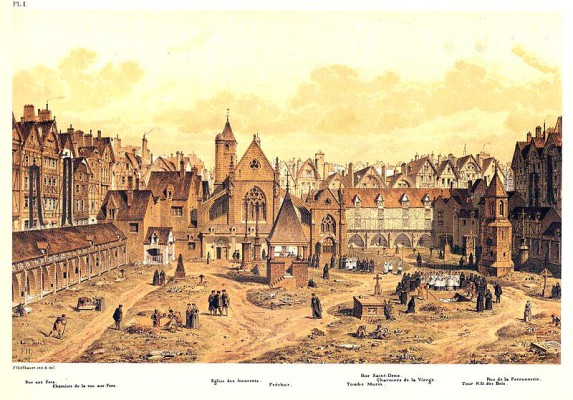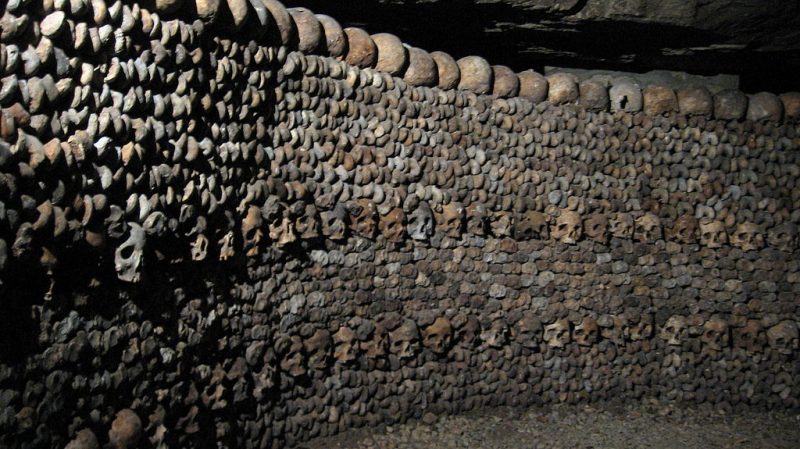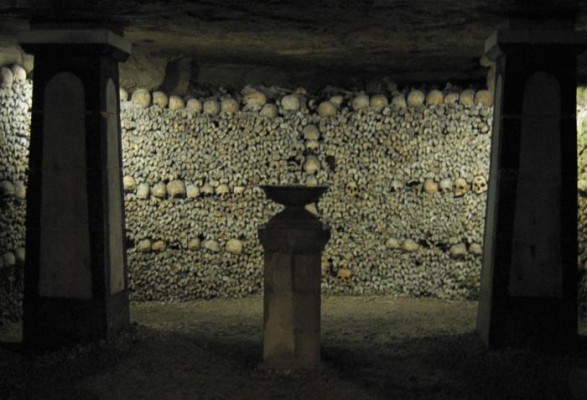“Do not try to find us” had been written on a note left on the floor of an illicit cinema, eighteen meters underground in the tunnels underneath Paris. Could this be the opening line from the latest spy thriller? No, it is advice given to the Gendarmerie, in 2004, when they stumbled on a cavern near the Trocadero.
The Sports Squad, which has the responsibility of safeguarding the almost two hundred kilometres of tunnels and caverns that make up the catacombs lying beneath the city streets of Paris, is utterly mystified as to who could have created a cinematic complex, complete with restaurant, in one of the caverns. During a training exercise beneath the Palais de Chaillot, they came across a tarpaulin stretched over the entrance to a tunnel. Clearly written on the cloth was “Building Site: No Access”. Pulling the tarpaulin aside, they found a tunnel containing a desk and closed-circuit television cameras set to begin recording automatically should there be movement in the tunnel. At the same time, a recording of a dog barking was played, obviously designed to frighten off any intruders.
Following the tunnel, the policemen found a huge cave that had been terraced like an amphitheatre and equipped with chairs, a cinema screen, and projection equipment. They also found a number of films, none of them unsavory in any way. Next to the cinema they found a bistro, complete with bar, cooking equipment, and tables and chairs. The organizers of the complex had electricity and telephones professionally installed. The decoration in the cavern was eclectic, consisting of swastikas, Celtic crosses, and Stars of David.
When police returned to the cavern three days later, with the French Electricity Board, to try to trace the electrical connections, they found the entire place cleared out, the electricity and phone lines disconnected, and the warning note lying in the middle of the floor.

The tunnels underneath Paris were carved out of Lutetian limestone rock as far back as Roman times. Builders quarried the stone from these tunnels to build the city; now the tunnels have been enlarged, and prove to be a fascination for many people. The only section legally open to the public is the ossuary. In the late 1700’s the skeletal remains of nearly six million inhabitants of the City were removed from cemeteries and transferred here for storage.
The ossuary was filled with remains taken from the Saints Innocents cemetery. In 1130, a cemetery around the church of Notre-Dame-des-Bois was renamed Saints Innocents. It covered an area bounded by today’s Rue Saint-Denis, Rue de la Ferronnerie, Rue de la Lingerie, and the Rue Berger. It had become the principal cemetery in Paris, and by the end of that century Saints Innocents was full to overflowing. To try to extend the life of the cemetery the oldest graves were exhumed and their bones were stored in charnier galleries, built as part of the cemetery walls. But by the end of the 18th century, the Parisians were faced with a cemetery overflowing with the dead of several centuries. The city fathers tried to limit the number of dead squeezed into the cemetery, but the decrees were largely ignored. Eventually a decision was taken to create a new cemetery on the outskirts of the city and to ban and eliminate all parish cemeteries within the city limits. With this ban, the remains were all moved to the catacombs.
In the mid 1950’s the tunnels were declared off-limits due to security concerns. As may be expected, once banned they become irresistible to some people. ‘Cataphiles’ regularly access the tunnels after dark. In the imagination of many Parisians, these ‘cataphiles’ partake in drunken orgies and other deviant behavior, though those who have attended claim they are innocent underground picnics. One suspects that the truth falls somewhere in between!
Lead image source

